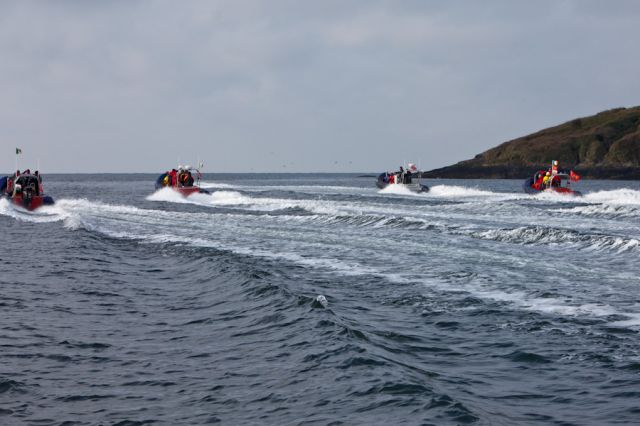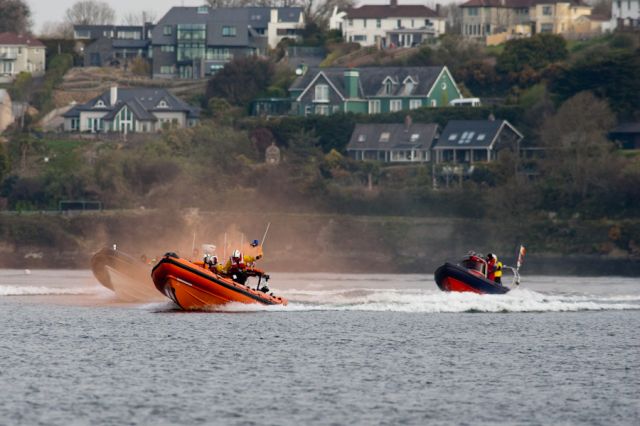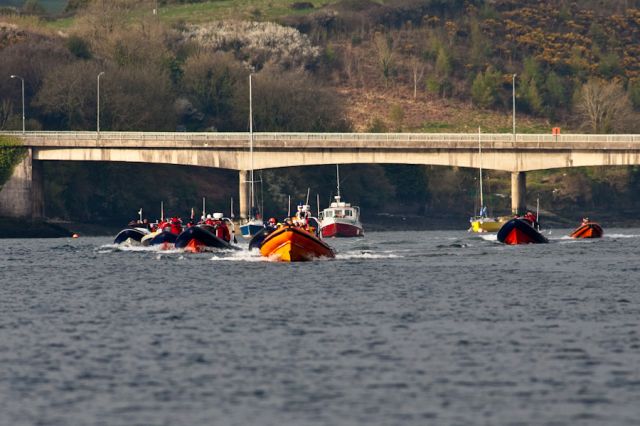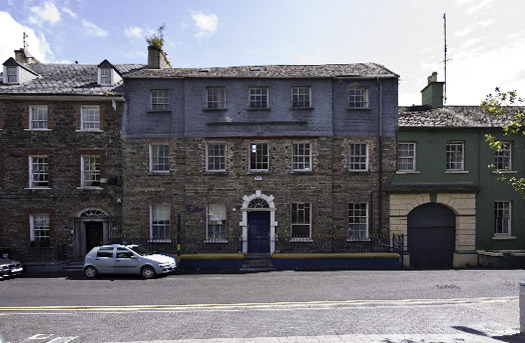Displaying items by tag: Kinsale
Kinsale Weekend Photo Action Here!
Action photos from this weekend's Kinsale Cruiser League by Bob Bateman are online now. Racing is on varied courses outside Kinsale Harbour. The event is an opportunity for training purposes for any boats looking to compete in the Commodores Cup later this year and May's ICRA Nationals in Dun Laoghaire.
Click here
Kinsale RIBS Head for Wales
They're away. Eight RIbs were escorted out of Kinsale harbour by Kinsale Life boat heading for Wales this morning on a perfect run to Aberystwyth. Afloat's Bob Bateman was there to capture the action on a perfect morning for a high speed dash across the Irish Sea. This flotilla has been raising funds for the RNLI for several years now and their exploits have gained national attention. An RTE News slip is also over the fold showing the 2007 run. Established in 2003, Kinsale Lifeboat station is one of the newest links in the RNLI safety chain ringing the coastlines of Ireland and the UK.





Kinsale Yacht Club
KYC was first located in two cottages opposite the slip at Scilly, across the harbour from the current location. By the mid 1950s, there were six boats racing in the club comprising of a dragon called Sleuth, two colleens, Pinkeen and Spalpeen, an Uffa Ace, Dick Hegarty’s cruiser Bedouin and a jollyboat sailed by the 70-year-old commodore Brig. Gen. Dorman. Jeanot Petch made an exotic addition to the already varied fleet when he built a Prout catamaran in 1957. Races started off the pierhead sailing to Bulman and back via the harbour marks.

The impressive period frontage of Kinsale Yacht Club. Photo: Bob Bateman
The fleet would leave Bulman to port or starboard according to the wind, as the commodore did not want to gybe that far out to sea. Later a 45 gallon drum was placed upriver and used as an upwind mark until the new bridge was built in the 1970s. All the boats at that time were kept on moorings in the harbour.
In the early 1960s, Dick Hegarty, in his capacity as the club’s solicitor, purchased the present clubhouse on behalf of the Club. Over time, fleets of Albacores, Mirrors, Flying Fifteens, Fireballs and Enterprises developed and junior sailing instruction began. The Cork harbour Dragon fleet also moved from the Royal Munster Yacht Club in Crosshaven, now the Royal Cork Yacht Club, to Kinsale.
In the 1970s, the Club started hosting Regional and National Championships and hosted the World Fireball Championships in 1977. In the same year, the Club also held the Dragon Gold Cup and started to develop it’s widely recognised race management teams. In 1978, the Club and its members funded and built the first marina.

The rear of Kinsale Yacht Club where dinghies and dayboats are stored. Photo: Bob Bateman
In the 1990s, the Club embarked on three separate extensions to the clubhouse. By this time, KYC had become one of the leading yacht clubs in the country. Junior sailing now encompasses Optimists, Lasers and 420s. One design racing takes in International Dragons and Squibs. The Club also supports three very strong Cruiser Classes (Class I, II and III) who now joined by a more relaxed White Sail Fleet.
(The above information and image courtesy of Kinsale Yacht Club)
Kinsale Yacht Club, Kinsale, Co. Cork. Tel: +353 21 477 3433, fax: +353 21 477 4455, email: [email protected]
Have we got your club details? Click here to get involved






























































